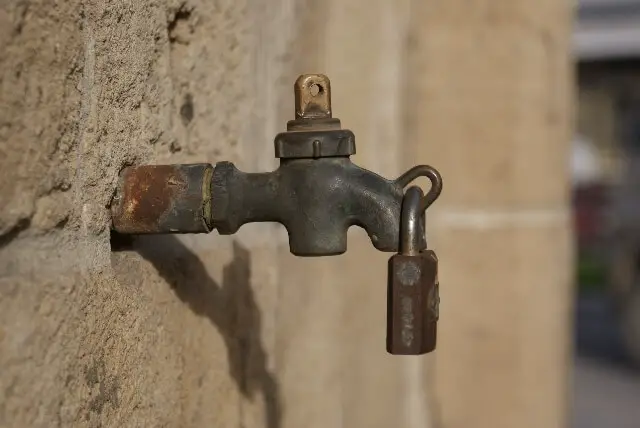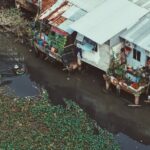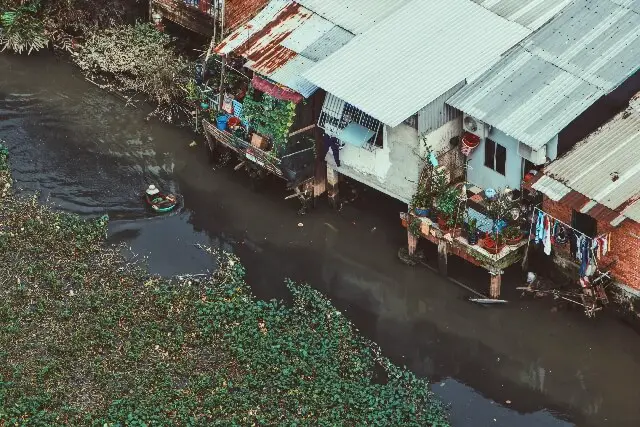There are a lot of concerns around deforestation and how it affects the environment in general. It removes habitats for smaller critters like squirrels and chipmunks but it provides necessary lumber for a variety of human necessities.
However, it can also do humankind harm and such as is the case with water scarcity.
How does deforestation cause water scarcity? The answer isn’t so black and white, unfortunately.
While there are many studies to suggest it reduces access to clean drinking water there are other studies that indicate how it can actually increase water yield. This means everything is still in the theory stages and there is no true scientific consensus.
Having said that, there is evidence suggesting how a lack of transpiration that trees provide depletes necessary rainfall.
This can create desertification of an area, which translates to lack of available farming land along with the necessary animals and insects needed for the ecosystem.
What Role Does Deforestation Play in Reducing Access to Potable Water?
In a study reviewing the effects of deforestation in the regions around Malawi, Africa, they concluded a reduced availability of locals accessing clean water by one percentage point.
While this may seem insignificant, it’s rather important since it affects not only urban areas but also rural communities and farmland.
This is because the removal of transpiration offered by trees can equate to less rainfall. But, it’s important to note that this is still a theory based on estimates, not necessarily facts.
No one has actually measured the amount of rainfall loss in Malawi from 1990 to 2000. The projections are computer models based on specific input data.
Also the UN’s Agenda 2030, as recognized in the same study, focuses political policy on insisting that deforestation equates to water scarcity.
With certain individuals highly suspect in this agenda, such as is the case with Klaus Schwab of the World Economic Forum (WEF), we must take the push for this with a grain of salt.
How Does Deforestation Theoretically Increase the Presence of Water?
There is a body of evidence suggesting that, in certain situations, deforestation can actually increase the presence of water.
But, it depends on the area, how much deforestation took place, for how long and what kinds of trees were inhibiting the flow of water.
Specific water-loving trees drink up vast reserves of water, leaving little on the surface or in the ground. When such trees undergo deforestation, they can actually provide an abundance of ground water; filling up local basins and reservoirs.
But these are small samples. No one has yet found a conclusive way to determine what conditions are necessary for water yield to replenish after deforestation.
Why Are the Effects of Deforestation Inconclusive in Regards to Water Scarcity?
In a meta analysis of several studies around the environment and the role hydrology plays, there are many problems finding conclusive evidence that deforestation creates water scarcity.
In fact, almost all studies within the analysis admit to there being an equal amount of evidence for both.
This is why it’s incredibly important to identify who funds the study and what their main agendas are. For instance, you will find a host of studies on this topic funded by the WEF and the UN.
But these only reinforce their position and they rarely ever support the possibility of the opposite.
How Does the History of Deforestation Affect Water Scarcity Today?
The history of the forestry industry has a large effect on water scarcity.
For instance, in the United States, the lumber industry of the 1930s lobbied the government to ban the sale, production and growing of hemp, one of the strongest materials.
It can make recyclable rope, clothing, paper, boxes, packaging and so much more. It’s a renewable source and it actually replenishes nutrients in the soil. But this threatened lumber tycoons, such as William Randolph Hearst, who was also owner of the San Francisco Examiner at the time.
With his power over the media, he was able to create a moral panic around hemp via its cousin, marijuana. Soon, prohibition over the plant came in full legal swing beginning with the Marihuana Tax Act in 1937.
Only in recent years has the government relaxed is stance.
How Can Deforestation Create Both Water Scarcity ; Yield Increase?
Because of forestry legally stomping out hemp, major virginal forests vanished across the American landscape.
There is evidence that this is responsible for depleting water resources as a result. Only in the 1980s were regulations put in place for lumber businesses to plant the same number of trees they cut down annually.
This does help, but trees take time to grow.
However, there is solid proof for the opposite being true in Australia. This country has seen massive deforestation campaigns and in March of this year, 2022, have Biblical-style flooding that has not yet ended at the time of this writing.
Even though this is a meager sample, you can see how the conditions, amount of deforestation, immediate climate of the area and other similar factors play into the outcome.
Conclusion
Water scarcity can come from a number of causes and many people question if deforestation contributes to this.
Certainly many studies suggest that it can adversely affect surface and ground water. However, others indicate that it can actually increase water yield. Therefore, the specific circumstances must all come under consideration.


